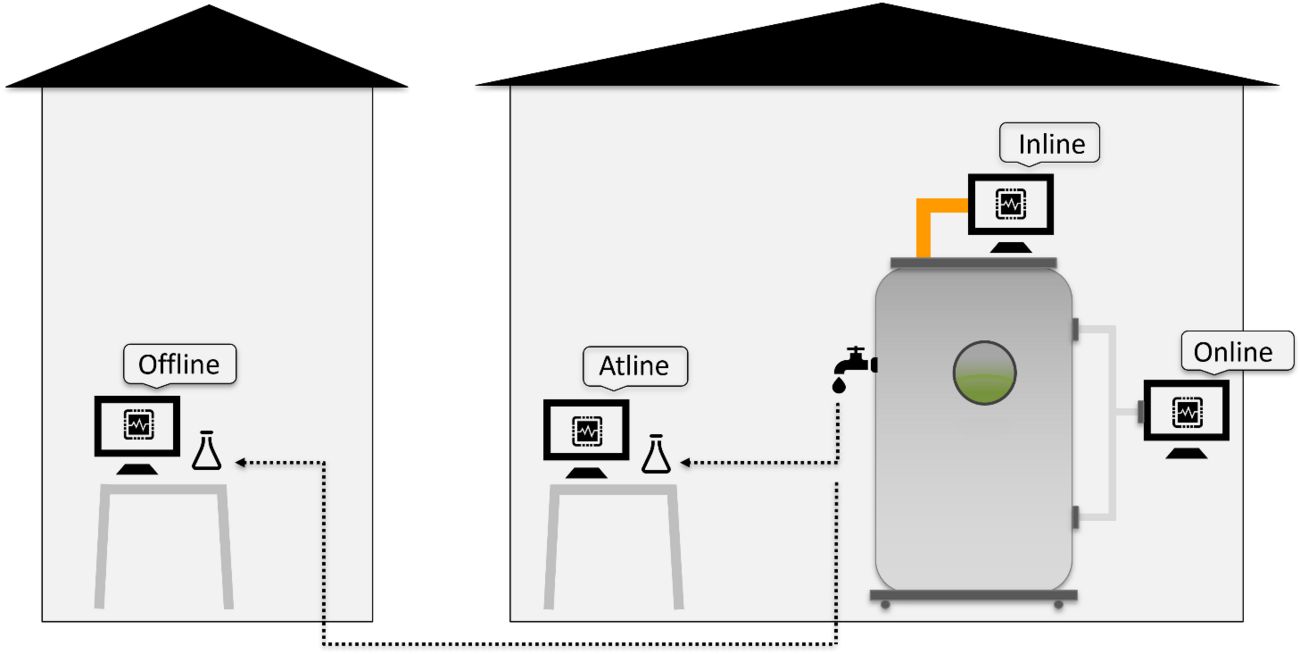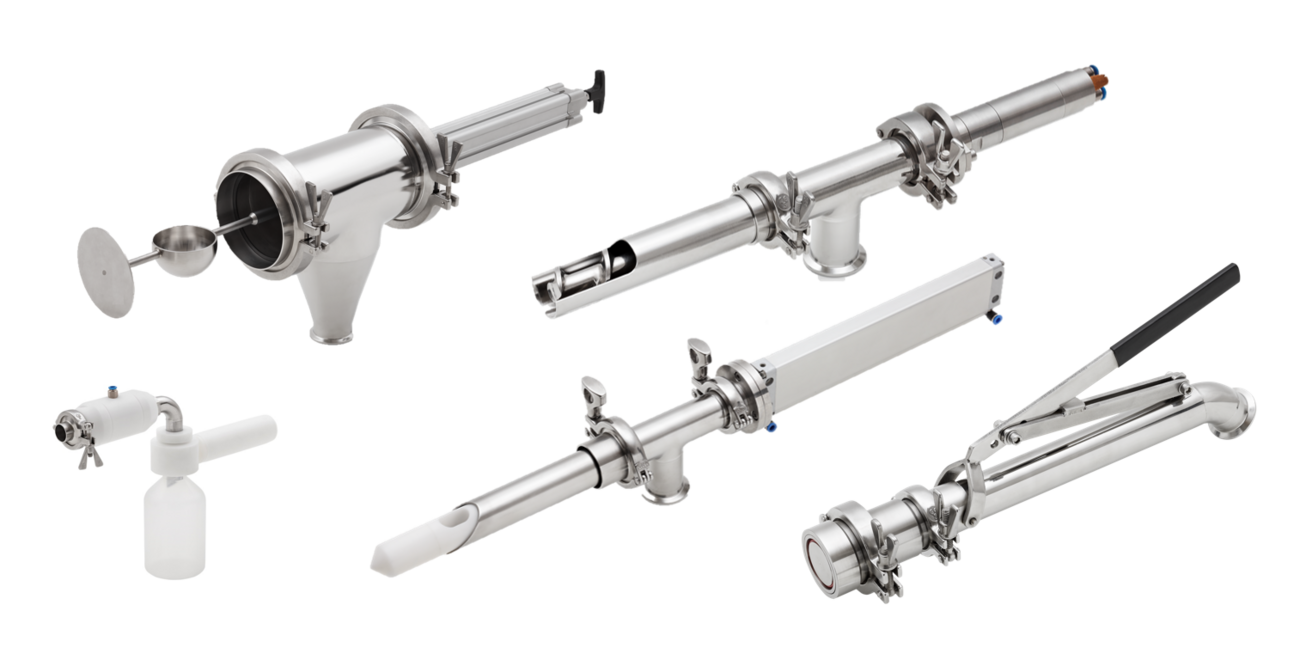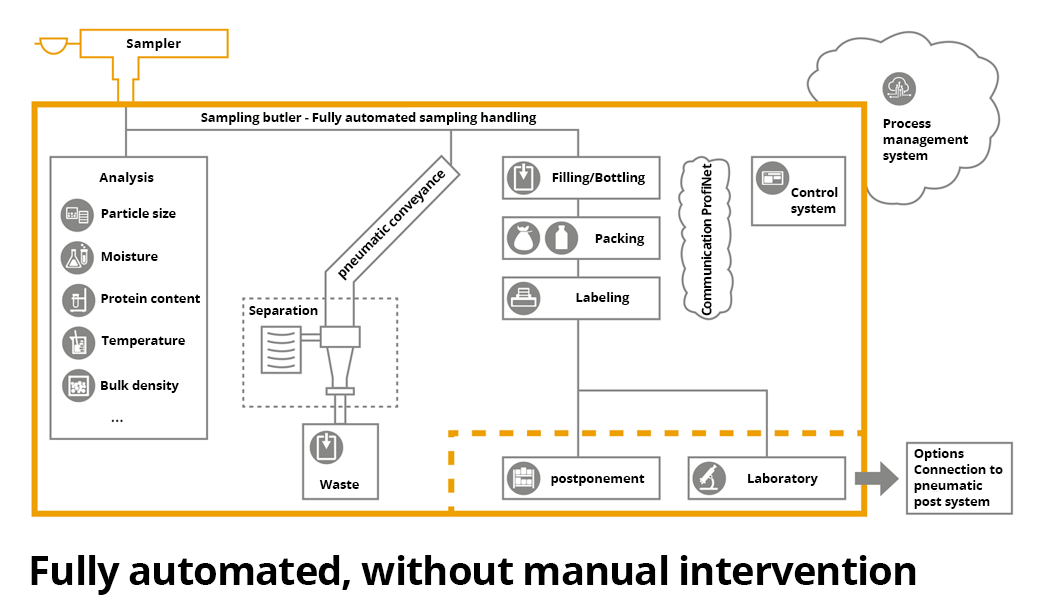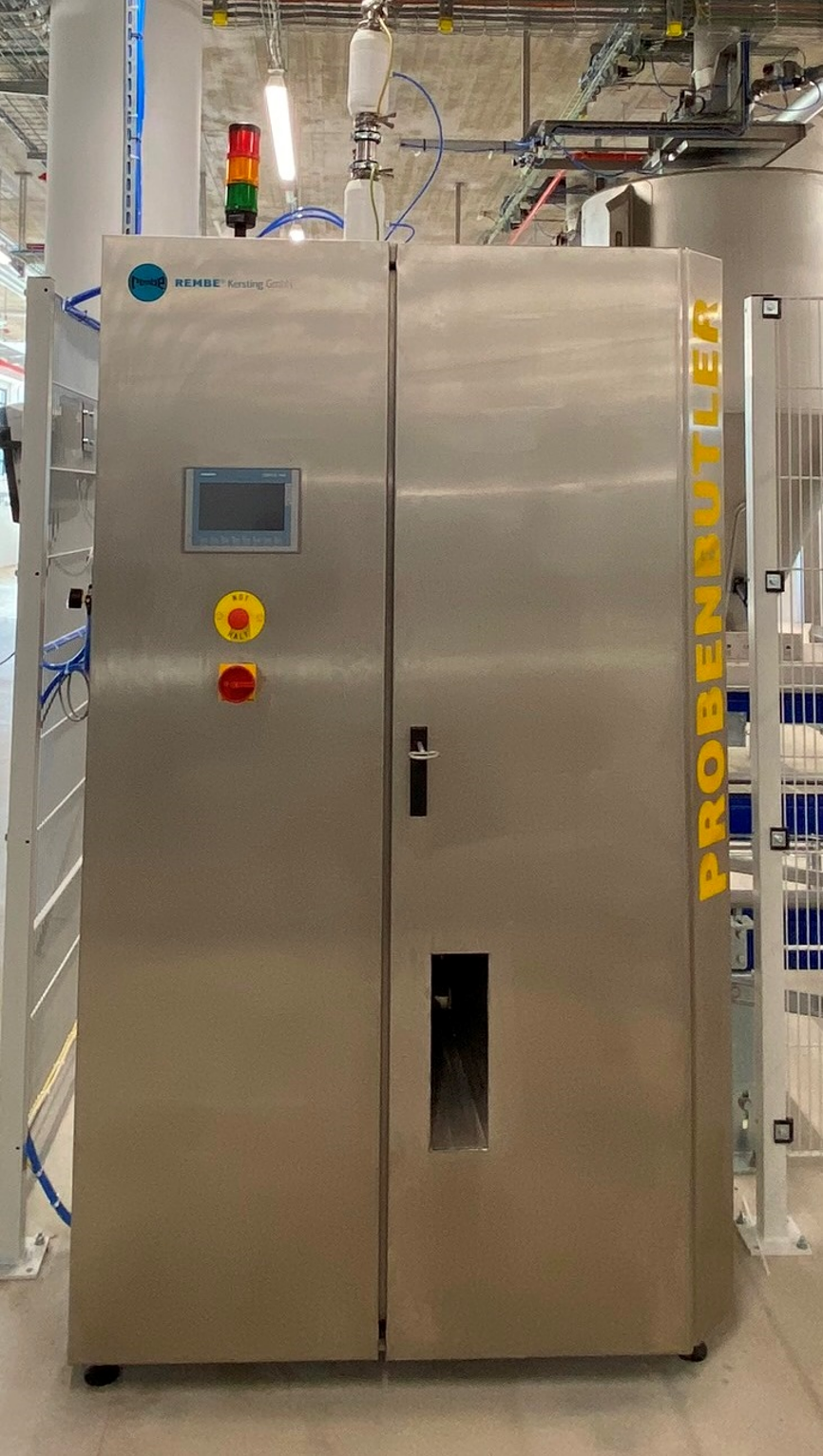Product safety through sampling
Around 14-16% of consumer spending in German households is spent on food, beverages and tobacco products[1]. It is important for the end consumer that they can always and unreservedly rely on the quality of the products. The Food and Feed Code (LFGB) exists to ensure that nobody is endangered in terms of their physical integrity through the consumption of food. §1, paragraph 1, sentence 1 describes the purpose of the law as ensuring the "protection of end users by preventing or defending against a risk to human health." Paragraph 2 has above all the protection of human health in focus on private and domestic areas. For this reason, the manufacturer or processor of food intended for the end consumer is obliged by various guidelines and quality specifications to always ensure the quality of the process materials used. This quality control can take place at various points during the manufacturing/ processing process, such as at goods receipt, during production or at goods issue. If this quality assurance is neglected, it can happen that products reach the end consumer that do not meet the strict quality specifications and thus carry the risk of damaging health in the short term or in the long term.
The Federal Office of Consumer Protection and Food Safety runs a portal on which public warnings and information are published according to Section 40 Paragraph 2 LFGB.[2]
"(2) Information of the public according to paragraph 1 by the authority is only permissible if other equally effective measures, in particular information of the public by the food or feed business operator or the economic operator, are not taken or not taken in good time or do not reach the end consumer.” (§ 40 Para. 2 LFGB). This means that there are serious quality defects here, which the end user must be made aware of by an official body.
This means that there are serious quality defects here, which the end user must be made aware of by an official body.
One case that attracted particular media attention was the salmonella infestation at an Italian confectionery manufacturer. At the end of 2021, a salmonella infection appeared on a sieve at the outlet of two raw material tanks at a Belgian production site. The employees then withheld the products made from it and replaced the filter. Nevertheless, the additional controls were not enough. In the course of time, infections with salmonella were reported from various European countries, which could be traced back to the consumption of products from this production facility. As a result, the regulatory authority revoked the production license. A large-scale recall of items already on the market followed. In addition to the legal consequences for the company, the reputation has of course also suffered.
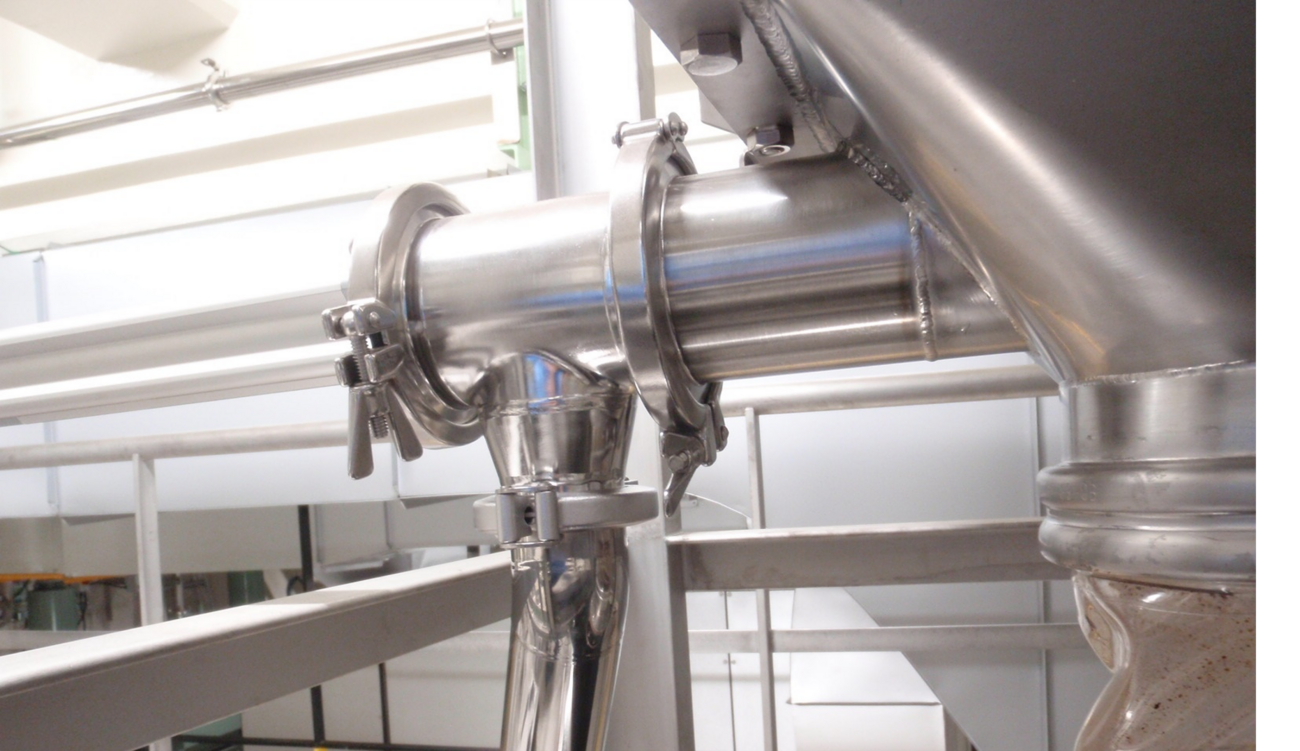
Sampling
The company REMBE Kersting GmbH specializes in sampling dry, powdery or granular bulk materials. Sampling is the removal of a portion of a total, where the portion can be considered representative of the total. This means that the sample taken must have the same distribution of properties as the total quantity. The aim of sampling is to be able to make statements about the quality, condition and composition of the total quantity by examining the sample.
Characteristics of sampling
- Single sample: One-time sampling from a process
- Collective or composite sample: a sample that was taken over a certain period of time or that was mixed from different individual samples
- Reproducible: Sampling under the same conditions must lead to the same results
- Representative: The material properties must be distributed in the same way in the sample as in the total quantity
- Sampling drive: Manual vs. Automated
- Type of sampling: inline, online, atline, offline
Figure 1 shows the different sampling and analysis positions. It is important that sampling and analysis should be carried out as directly as possible in the process in order to achieve the most representative possible result.
Different types of sampling
When choosing the right system for sampling, different aspects have to be considered. This includes various material parameters such as the type of material, particle size, flow behavior and temperature, but also parameters that describe how dusty, sticky or corrosive the process material is. In addition to the purely material-specific properties, process-specific information must also be collected. This includes the installation location, dimensions, e.g. of the downpipe, pressure conditions or the presence of an ATEX zone.
Figure 2 contains an overview of various standard samplers from REMBE Kersting. These range from cup and screw samplers to sampling valves and nozzles. Each of these samplers is designed for a specific application. Due to the connection to the processes with tri-clamps and the production of stainless steel, the samplers are very easy to disassemble and clean. Seals with FDA approval also allow the sampler to be used in processes in which food is processed.
Practical example of a sampling position
Figure 3 shows a pneumatic cup sampler mounted on a canister. This means that material can be removed automatically, for example during filling or loading to be taken from the process. Equipped with an electro-pneumatic control, the samplers can easily be integrated into the control of the control system.
Downstream processes: sample handling and packaging with the sample butler
The mere removal of material is rarely the only reason for sampling. This is only the case with reserve samples, which are only examined and analyzed when a downstream production facility or a customer complains about a defect in the product. A common reason for sampling is to directly examine the material used. For example, the following parameters can play an important role in the processing of grain: grain size, moisture, protein content, temperature or bulk density (see Figure 4).
Automated analysis and packaging of samples
A sampler in combination with the sample butler (Figure 5) not only enables inline material extraction, but also automated analysis and packaging of samples. Through the connection to the process control system, a label can be attached to each sample container with information, for example, about batch and batch number, date and time of material withdrawal. The analysis results are automatically stored in the control system or in other databases. After filling, the sample container can be transported further, e.g. by pneumatic tube.
The advantage of this procedure is that Sample butler can work fully automatically. This also includes self-cleaning of the system to avoid cross-contamination. This guarantees effective and efficient processing of the sample.
Summary
As described above, quality control is of great importance in the food industry. Only regular inspections can ensure safe production and ultimately a safe product for the end user. For this reason, sampling is essential. REMBE Kersting products enable simple, safe inline sampling and analysis. Automated sampling, handling and analysis always enable representative quality monitoring. Discrepancies in the processes or in the materials used can be discovered in good time. The automated control of the systems also gives the laboratory employee the opportunity to take care of other important activities.
Source
[1] https://de.statista.com/statistik/daten/studie/75719/umfrage/ausgabenfuer-nahrungsmittel-in- deutschlandseit-1900/#:~:text=Anteil%20der%20Ausgaben%20f%C3%BCr%20Lebensmittel%20in%20Deutschland %20an%20den%20Konsumausgaben%20bis%202021,-Ver%C3%B6ffentlicht%20von%20Sandra&text=Im%20Jahr%20 geben%20deutsche%20Haushalte,Nahrungsmittel%2C%20Getr%C3%A4nke%20und%20Tabakwaren%20aus
[2] lebensmittelwarnung.de

